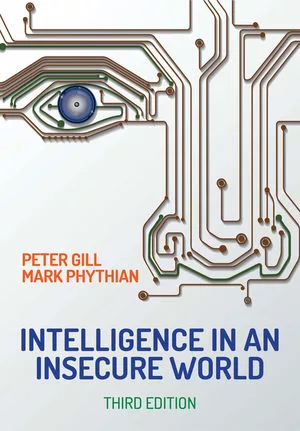Red Teaming + Artificial Intelligence: A Match Made in Cybersecurity Heaven

Red teaming, or the practice of detecting network and system vulnerabilities by taking an attacker-like approach to system, network or data access, has become a popular cybersecurity testing process across a wide swath of organizations. Sometimes referred to as "ethical hacking," red teaming helps organizations be more self-aware and prepares IT teams for swiftly recovering and rebuilding in the event that systems become infiltrated.
Considering recent research found that three in five enterprises fully expect to be breached this year, and a third expect they won’t even know a breach when it occurs, red teaming has never been more crucial. By designating a group to focus solely on challenging the security of your organization at all times, assumptions can be argued, faulty logic can be identified and limitations can be highlighted. And, knowing that the majority of data breaches can be tied back the misappropriation of digital identities and user credentials, identity management can also be battle-tested to find exposure points. By testing and monitoring your system, network or applications through the eyes of an adversary, red teaming can pinpoint alternative security options and reveal the consequences of an attack plan.
Finding Context in Massive Amounts of Data
When working to uncover breaches, it’s critical to quickly identify what events actually matter, and red teaming can help. Without proper context around relevant events, however, organizations can’t make sound decisions, and usually having sufficient context means being inundated with data. Too often, IT teams find themselves buried in false-positives from their intrusion detection systems, firewalls, security information or event management systems. In cases like this, identity governance can provide additional visibility into an organizations’ critical systems, identifying who has access to what and what they’re doing with that access. To make red teaming truly effective, organizations need to take drills a step further, and help overwhelmed IT teams efficiently sift through large amounts of data so they can determine what’s important and better understand the breach (or potential breach) in question.
How exactly can organizations help IT teams wade through ever-increasing amounts of data? By incorporating artificial intelligence (AI)-based cybersecurity solutions into their red teaming exercises. Such technology has the ability to ingest large amounts of data and combine it with real-time activity to provide IT teams with contextual insights and enhance organizational visibility. By leveraging machine learning techniques, this technology can analyze an organization’s identity data such as account and entitlement assignments and combine it with real-time activity information to identify suspicious or anomalous behavior. Combining red teaming with AI-powered solutions can provide organizations with a deeper understanding of the risks associated with user access, and it can free up valuable IT resources to focus on the higher risk components.
The Technological Benefits
In particular, injecting AI-powered technology into red teaming activities can allow organizations and their IT teams to:
- Streamline Risk Management: This technology can narrow the scope of risk management and threat detection to high-risk resources or actors, lessening the likelihood that malicious actors can sneak by even as the volume of alerts increases. With an analytics engine that uses time series analysis and deep learning to scan massive amounts of identity data to identify risks (without having to rely on a team of security experts), the technology can establish behavioral baselines over time as historical records translate into an established range of normal behavior. Patterns are refined as the solution learns what actions, if any, an administrator takes in response to unusual events, and over time, true high-risk events are preemptively identified from the steady stream of everyday activity.
- Optimize Governance Decisions: When governance decisions are made in isolation, they’re prone to error because they only consider immediate circumstances. By having a broader understanding of the network environment, however, IT teams can make rapid, accurate choices that decrease risk for the business. For instance, the use of peer groups, in which users are grouped by similar characteristics, can highlight any identities that have unusual access. This technology can also enable smarter governance by leveraging AI based on behavioral pattern recognition and statistical analysis to focus controls on high-risk scenarios in real-time. And because the technology uses a dynamic risk model rather than relying on a risk snapshot, it can continually adjust its model as an environment evolves, perpetually identifying new and additional types of high-risk identities and activities. For example, if AI uncovers a user in your organization accessing critical data during off-peak hours, that can be a red flag. You can then explore why the user might be doing so, and whether or not that access is appropriate.
- Increase Operational Efficiency: The pace of global business is rapidly accelerating. This reality means the volume of new users, data and applications never stops expanding, and it’s placed a premium on efficiency gains since a key differentiator for businesses today is the ability to do more with less. AI-powered identity governance technology can increase operational efficiency for both IT teams and general business productivity by automating reviews and approvals of low risk access, allowing organizations to focus on access to data and users that pose a higher risk.
Identity and Behavior Visibility is Key
In the cybersecurity world, visibility (i.e. real insight into identities and how they behave in an operational ecosystem) is everything. Unfortunately, though, most organizations remain unaware of hackers’ actions until it’s too late. In fact, Verizon’s Data Breach Investigations Report indicates that it typically takes more than 200 days for an enterprise to discover a breach. Visibility is absolutely essential for decreasing the time between a malicious activity occurring, detection of that malicious activity and reducing risk of exposure for an organization, its data and customers.
To guarantee constant visibility, organizations need to augment tried-and-true, human-based processes like red teaming with AI. Doing so can help organizations govern their identities more effectively, provide contextual insight for key business users, assist in the management of potential threats and drastically reduce security vulnerabilities. Considering the veritable explosion of new applications, data and identities being produced by businesses today and the highly motivated hackers seeking to exploit them, now is the time for organizations to capitalize on the latest advances of technologies in order to move beyond simply knowing what’s happening in their environment and gaining the wisdom to confidently secure it.
Looking for a reprint of this article?
From high-res PDFs to custom plaques, order your copy today!









